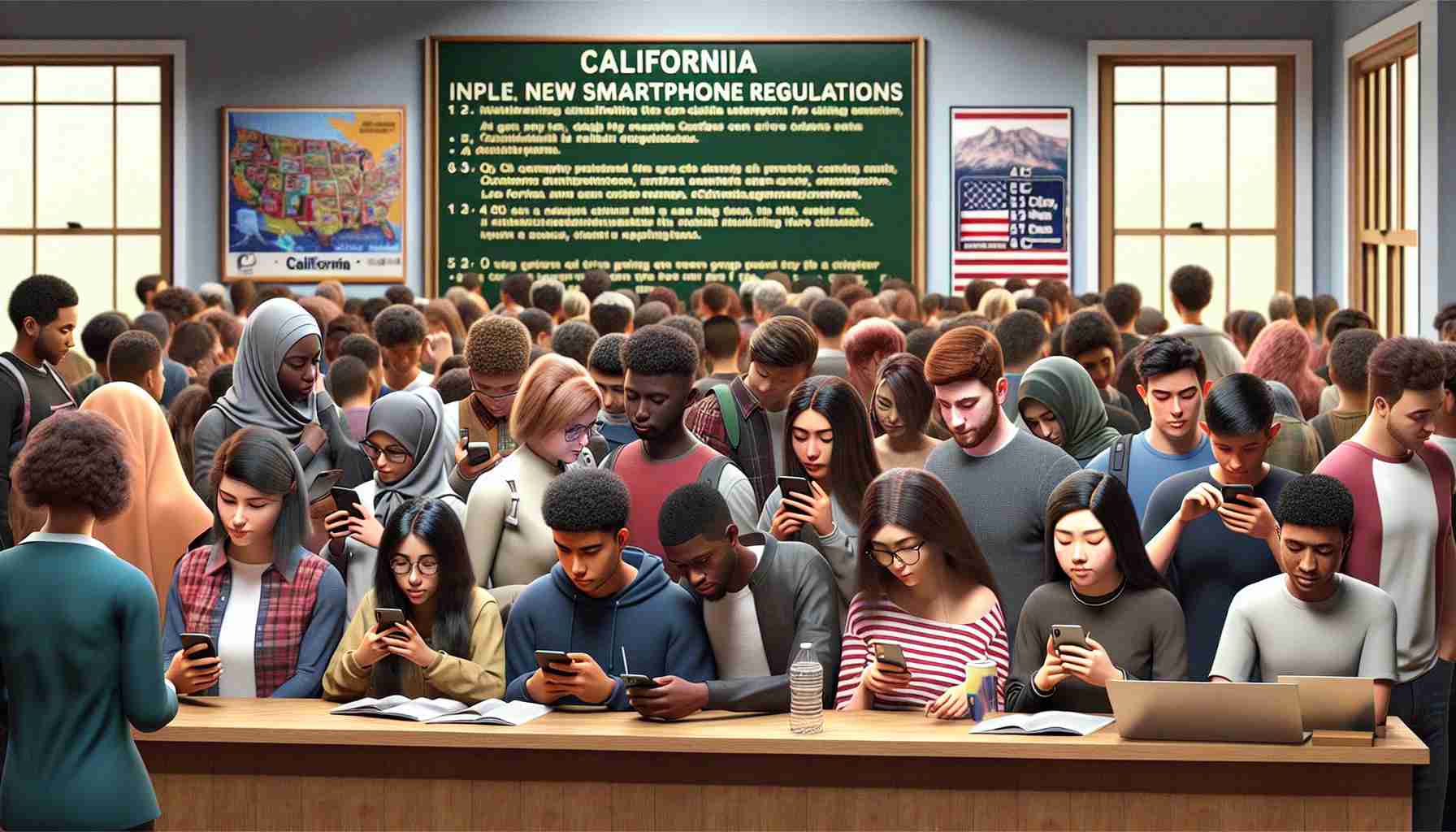California has taken a significant step forward by introducing legislation aimed at regulating smartphone usage within schools. This move aligns with similar initiatives in various states and is designed to foster an environment conducive to learning.
Governor Gavin Newsom championed the law as a means to tackle distractions in classrooms and mitigate the adverse effects that social media can have on the mental well-being of young individuals. Proponents of the legislation believe that restricting phone access will enhance students’ ability to concentrate on their studies and engage socially with peers. However, not everyone is on board; some critics have voiced concerns regarding the challenges of enforcing these rules, as well as potential barriers to communication during emergencies.
The California School Boards Association has expressed its support for personalized approaches in regulating smartphone usage, advocating for local district flexibility instead of a one-size-fits-all statewide directive. According to the new law, districts are required to establish their own smartphone policies by July 1, 2026, with mandatory reviews every five years.
This development reflects ongoing efforts to combat smartphone dependency among students, with supporters highlighting the benefits of fostering healthier classroom interactions. While ensuring that emergency use of phones remains permissible, the law aims to minimize distractions during critical learning times.
Reports from districts that have already implemented similar bans suggest positive trends, as students appear more engaged and less focused on digital distractions during school hours.
Practical Tips and Interesting Facts on Smartphone Regulations in Schools
With California implementing new regulations on smartphone use in schools, it is essential for students, parents, and educators to navigate this change effectively. Here are some valuable tips and interesting facts that can help you adapt to the new environment, enhance learning experiences, and ensure that technology is used productively.
1. Establish a Positive Digital Separation
One of the key reasons for the new legislation is to minimize distractions in the classroom. To make the most of this change, students should establish a routine that separates school time from smartphone use. Consider implementing a “no phone” zone during study hours at home, which can help reinforce the habit of focusing without digital distractions.
2. Utilize Technology Wisely
Smartphones can be powerful educational tools when used appropriately. Students should explore educational apps and resources that can enhance their learning experience. Software for note-taking, time management, or even subject-specific applications can promote better study habits and efficiency.
3. Communicate Expectations
Parents and guardians should discuss the new smartphone policies with their children. Understanding the reasons behind the regulations can increase compliance and foster a more open environment. Encourage students to share their thoughts and feelings about the changes, which can lead to a collaborative approach in following the rules.
4. Engage in Face-to-Face Interaction
As social media and texting often replace in-person communication, use this opportunity to strengthen personal relationships. Encourage friends to spend time together, engage in group study sessions, or participate in extracurricular activities without the mediation of smartphones.
5. Stay Informed about Local Policies
With districts having the flexibility to create their own smartphone regulations, staying informed about specific policies at your school is crucial. Follow school board meetings and newsletters for updates and documents related to smartphone use.
6. Understand Emergency Protocols
If smartphones remain permitted during emergencies, it is important for students to understand the appropriate use of phones in those situations. Familiarize yourself with school emergency procedures and alternatives for communication if a smartphone is prohibited.
Interesting Fact: The Rise of Smartphone Dependency
Research indicates that schools that have implemented smartphone bans or restrictions often witness a significant improvement in student focus and engagement. Many educators report higher participation rates and improved academic performance when distractions from smartphones are minimized.
7. Cultivate Mindfulness
In a world dominated by digital interactions, practicing mindfulness can help students become more aware of their phone usage patterns. Techniques such as meditation or reflection can serve as tools for students to understand when and why they turn to their devices.
As California navigates this new landscape of smartphone usage in schools, being proactive and informed about these changes can help students thrive academically and socially. For more information on educational policies and guidelines, visit California Department of Education for official updates that may impact students and schools across the state.























